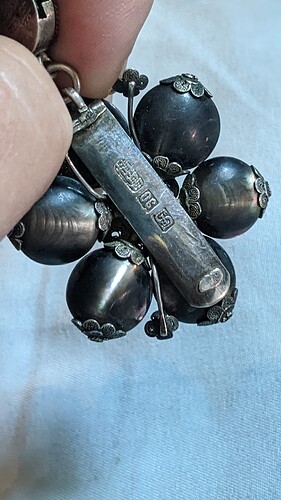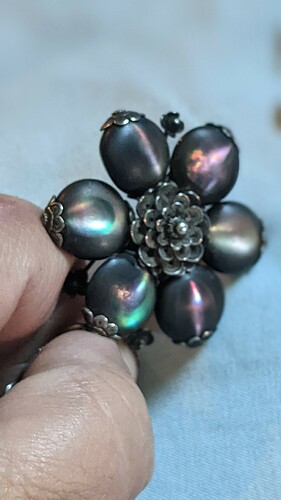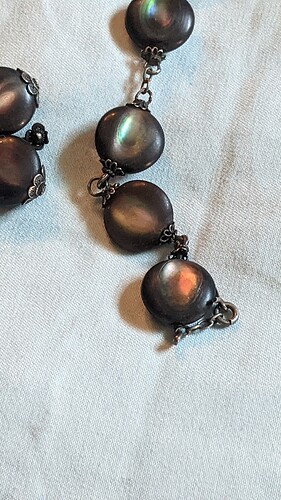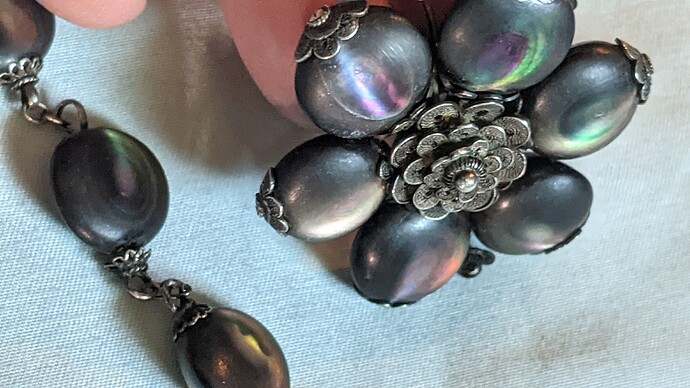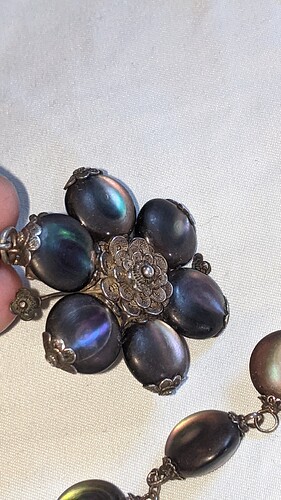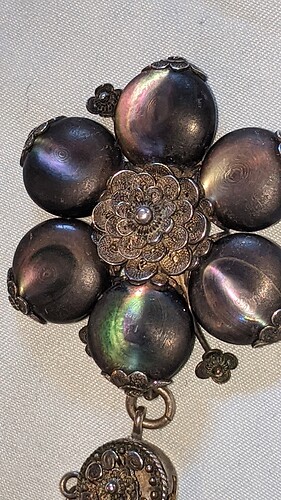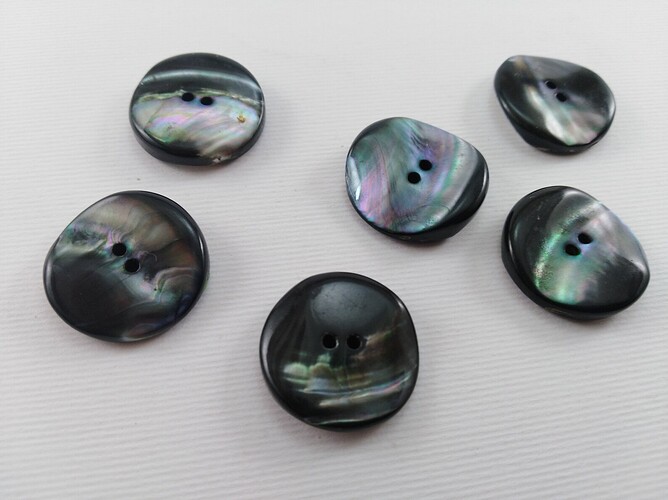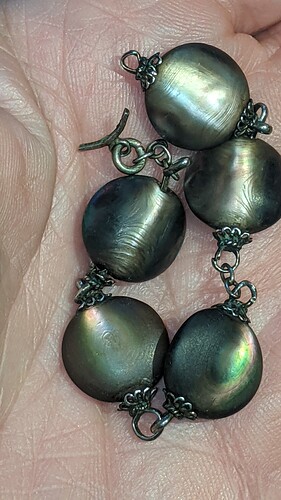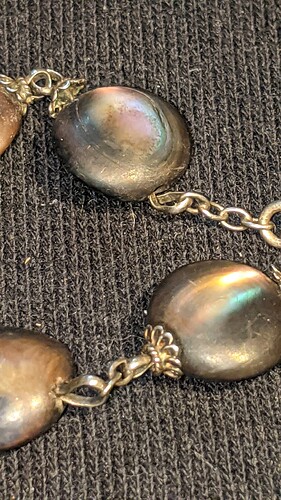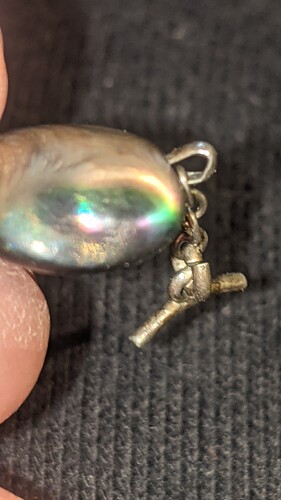Hello,
I’m truly sorry this is a different subject but I wasn’t sure where to go. I’m new here. I was wondering if anyone could help me, my mother has pre-war one Tahitian black pearls that are coin shaped about the size of a nickel. They’ve been passed down to her by her great great grandmother so it would be in the 1800s. I guess she traveled a lot with her husband that was in the military. We would like to find out if these are worth as much as I think they would be because they’re not cultured they’re natural. I was wondering if we were miss guided.
Rhonda: No I do not think that you are misguided on thinking that your item is worth quite a bit. 1. If the are natural pearls, that alone says a lot. 2. If the age of your pearls & the setting is correct, that says a lot also.
I am new at this also, but have seen a few antique pieces. From what I see. I would say, take the items to a VERY reputable appraiser, and have them appraised for “insurance value” with pictures and documentation . It may cost a bit, but you will know just what it is you have and what it’s worth.
I have been disappointed in the past by doing this. BUT I have also been greatly rewarded.
By the looks of that piece, I would take the risk.
Yes thank you. Any and all advice is what I need. I’m sorry I haven’t responded. It’s due to a death in my family.
These are cut shell beads, not pearls
Hello, this antique jewelry of yours is made in China. It should be silver from the Qing Dynasty about 1890. The Chinese character written on it is “永盛隆(Yongshenglong)” is the name of the manufacturer, and the engraved number “90” should refer to 90. % Silver content. (I am a native Chinese speaker.)
In any case, this is an antique jewelry with a story, worth collecting.
I can see why you’d think that. But they are not cut. I did the tooth test and they are very gritty like my real pearls
Thank you for the information. I appreciate it very much
Lovely piece, is this a necklace?
The grit test only separates plastic-coated imitation pearls from real pearls. An unpolished shell bead or even an unpolished gemstone bead is gritty when you rub it on your teeth.
Tahitian black pearl farming did not start until 1965.
Notice the lavender, green and silvery-colored straight and curved sheen in your photos? These are all classic indications you have black mother of pearl beads just like this photo of black mother of pearl buttons.
Okay I can see why you’d say they look like buttons. These bottoms change from black to a light brown in certain angles in the light? Because the buttons as you call them seashells leather pearl do and I have close up pictures I don’t know what they look like when they glue whatever it is you’re talking about together or whatever they do but I also know that way before 1965 villagers were pulling Tahitian pearls out and just selling the mother of pearl not knowing that the pearls were worth more of course they were big round and flat at the time until they modified everything and started making pearls they came in and created round pearl beds for the Tahitian pearls to look like they do now days. Way before my grandmother was born which was 1919 these were her mother’s when she was young.
Yes it use to be back in the early 1900’s. Only this part was saved. Thank you
Thank you for taking the time and letting me know. But I’m going to take to them in for a appraisal. I’ll let you know what I find out. Again thank you…
Accredited Gemologists Association - Hopefully you can find a qualified gemologist in your area.
Those are not mother of pearl. But definitely get an honest appraisal of what you have there. If you can’t, wait until you can travel an get the correct appraisal. Gorgeous piece. If you can get some type of actual providence on the creation of this jewel, it will help your honest appraiser immensely…good luck! What a beauty, irregardless.
I’d love to hear an update if you’ve gotten them appraised! For curiosity and education’s sake.
Take them to your Veterinarian, Chiropractor, or Dentist for an X-ray to see the internal structure. I have done this in the past to make the ID. ;))
IMHO they appear to be beads formed from MOP or Abalone shell. With a pearl you don’t see any layers because you don’t slice thru them - the pearl is used whole. These clearly exhibit layering - same as when you cut thru wood layers to make lumber for furniture. You can see the ‘grain’ if you will. Shells and pearls are both formed in many layers. As I believe I am seeing the layering I’m thinking they are made from shell…
